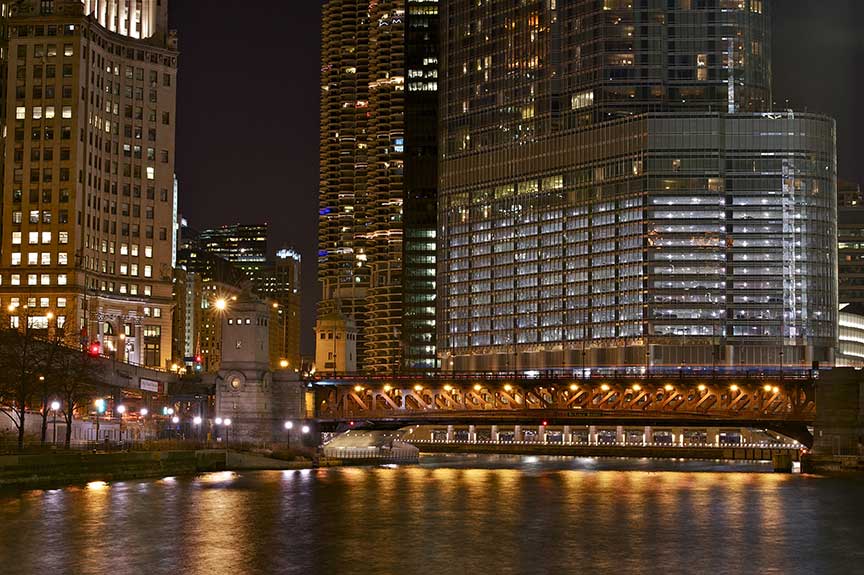The History and Evolution of Chicago’s Thriving Food and Restaurant Scene
It’s no secret that Chicago is a treasure trove of culinary creativity. Ever since the first fine dining restaurant, the Lake House Hotel, opened on the Kinzie in 1835, just a few years before Chicago was incorporated in 1837, seriously good eats continue to satisfy hungry Chicagoans. But how has the restaurant industry changed over the years? What’s the future for Chicago restaurants and foodies alike? To answer these questions, here’s a look at the history and evolution of Chicago’s thriving food and restaurant scene.
Necessity Drives Fine Dining in Chicago From the Start
From the beginning, Chicago’s culinary culture and iconic foods were driven by the demand of its residents. To this day, it’s the restaurant-goers who continue to narrate how the food scene continues to unfold in the Windy City. Therefore, when sit-down eateries started to crop up in the 19th century, Chicago restaurateurs were keenly aware that the people of the city wanted good food for a good price.
In fact, in the early days, several highfalutin restaurants had to close down or rethink their menu prices to accommodate Chicago’s wallet-conscious diners. For instance, the Chicago branch of New York’s famed Delmonico only lasted a few months before it was shut down for serving too fancy and too expensive fare.
Consequently, restaurateurs pivoted and started serving basic food prepared quickly and for a reasonable price. This trend hasn’t changed much over the years. Chicagoans are still craving good food that won’t break their budgets.

A Need For Fully Immersive Dining Experiences
Money wasn’t the only defining factor in Chicago’s food scene. As restaurateurs continued to cater to the needs of local diners, they had to roll with the times. For example, during prohibition in the 1920s and 30s, restaurant owners had to compensate for the lack of customers and alcohol sales.
They did this by featuring live music and variety shows in their dining establishments. To this day, Chicago enjoys a rich history of burlesque dancing, which started when quick-thinking restaurateurs attempted to keep diners in their seats by featuring dancers in their dining halls. This tradition of immersive dining experiences with entertainment combined with sit-down dining continued long after the repeal of prohibition.
Carrying On Tradition and Evolving With the Times
From catering to high-profile gangsters during the height of the mobster days in the mid-1900s to buckling under the harsh days of rationing during WWII, Chicago’s restaurants learned sharp lessons about how to keep their doors open.
With a shrewd Midwestern sensibility, restaurant owners continue to roll with current demands in order to stay relevant to diners today and well into the future. To wit, the pandemic which broke out in 2020 forced the hand of many restaurant owners to lean more into curbside and delivery service.
With the increasing relaxation of pandemic-related quarantines now, the Chicago food scene is enjoying a unique renaissance. Today, Chicago dining establishments are starting to combine the best of old traditions and new innovations when it comes to serving diners the food they crave. But how? Enter the era of ghost kitchens.
The Ghost Kitchen: The Future of Chicago’s Food Scene
For over 150 years, Chicago restaurants have switched gears and accommodated the needs of diners. But in the aftermath of the pandemic and faced with the ever-inflated cost of doing business, restaurateurs are again obligated to move with the times in the 2020s and beyond.
The evolution-solution for many chefs and entrepreneurs is to establish commercial kitchens that produce culinary delights in unorthodox ways. And so the dawn of a new hybrid food service is born in what are known as ghost kitchens, which are making a meteoric rise in the Chicago area.
To explain, ghost kitchens are fully functional kitchens that do not provide in-house seating. Instead, chefs and staff create mouthwatering dishes that are exclusively picked up or delivered to patrons.
Ghost kitchens are appealing to both diners and restaurateurs because they are more affordable to run, and the savings are passed on to patrons. Additionally, these unique commercial kitchens allow owners and operators a more streamlined environment, so they have the flexibility to offer more exotic, diverse, and unique food items on their menus. For many restaurateurs, ghost kitchens are the answer to the age-old question of satisfying customers’ needs while making a profit in the Windy City.
Conclusion
Happily, the future looks exceptionally bright for restaurant entrepreneurs, chefs, and Chicago diners. From its early days of serving simple food to budget-conscious customers on the Kinzie to today’s unconventional yet effective ghost kitchen concepts - Chicago’s food scene is alive and thriving. To be sure, Chicago’s culinary culture will continue to flourish as restaurateurs persist in moving in stride with the ever-evolving times in this exciting and vibrant Midwest metropolis.
 >
>